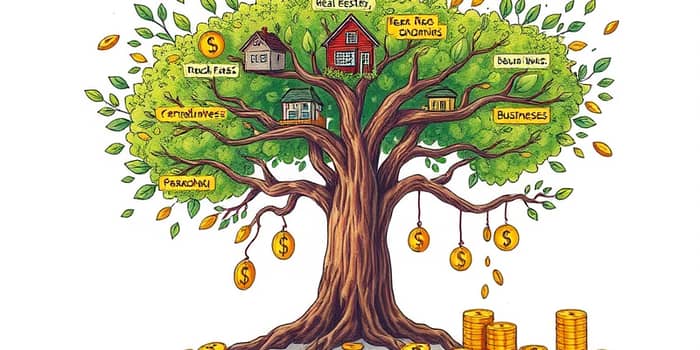
Building lasting wealth isn’t just about chasing the highest returns; it’s about assembling a portfolio that delivers stability, growth, and resilience. By layering income-generating assets into your strategy, you can create a self-reinforcing system that nurtures both short-term cash flow and long-term appreciation.
Understanding the variety of assets available is the first step toward crafting a balanced growth plan. Each type brings unique benefits, risk profiles, and management requirements.
Investing with an emphasis on cash-flow can reshape your financial landscape:
No investment is without risk. Acknowledging potential pitfalls is crucial to developing a resilient strategy.
Moving from theory to practice involves clear planning, disciplined execution, and ongoing evaluation.
Follow these steps to weave income-generators into your broader growth objectives:
1. Set Clear Goals
Define your targets: a supplement to salary, a fund for retirement, or capital for future ventures. Quantifiable milestones help measure progress and maintain motivation.
2. Assess Risk Tolerance
Reflect on your comfort with market swings, debt exposure, and potential property management challenges. Your risk profile should guide asset selection and allocation percentages.
3. Diversify Your Portfolio
Create a mosaic of real estate, equities, fixed-income products, and alternative investments. A balanced mix can smooth income streams and hedge against downturns in any single sector.
4. Monitor and Adjust
Conduct quarterly or annual reviews of performance metrics: yield percentages, occupancy rates, dividend histories, and overall portfolio value. Rebalance allocations to capitalize on emergent opportunities or reduce exposure to underperforming assets.
Real-world examples demonstrate how layered strategies can yield robust outcomes.
Example 1: A mid-career professional allocates 40% of investable assets to REITs and rental properties, achieving a blended yield of 5%. Over ten years, property appreciation and dividend reinvestment compound wealth, while rental cash flow covers living expenses during a sabbatical.
Example 2: An entrepreneur divides capital equally among dividend aristocrats, municipal bonds, and peer-to-peer lending. The equities provide growth and rising dividends, bonds supply tax-advantaged interest, and P2P lending offers higher yields. The synergy of these streams ensures liquidity and steady returns even during economic downturns.
Layering income-generating assets into your growth strategy isn’t a one-size-fits-all process. It demands thoughtful goal-setting, rigorous diversification, and proactive management. When executed well, this approach transforms your portfolio into a dynamic ecosystem: roots in reliable cash flow and branches reaching toward capital appreciation.
By blending real estate, dividend stocks, fixed-income products, and alternative vehicles, you construct a financial fortress capable of weathering market storms and seizing growth opportunities. Embrace the journey with discipline and adaptability—your future self will thank you for the stability, security, and prosperity you’ve built today.
References













